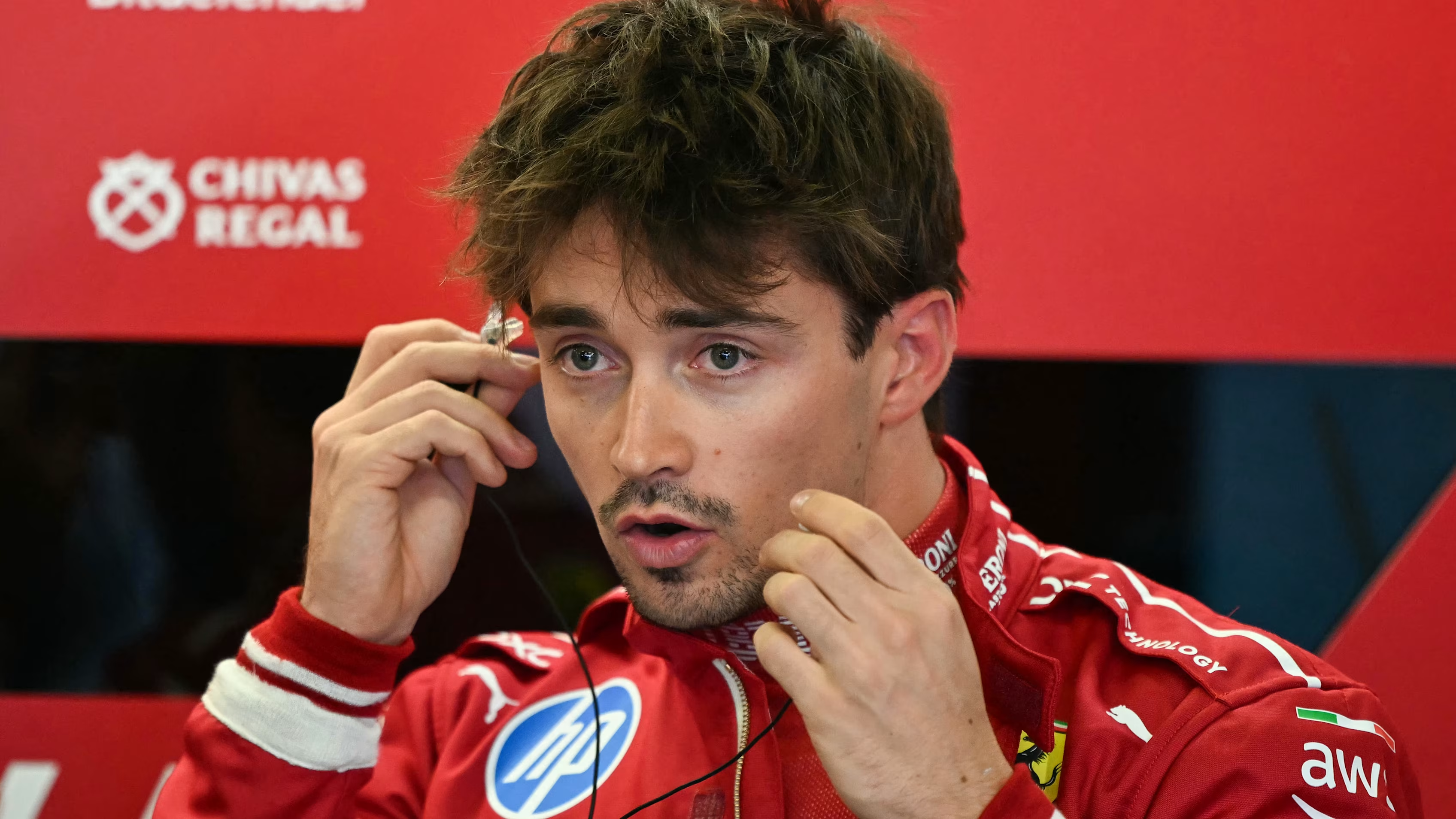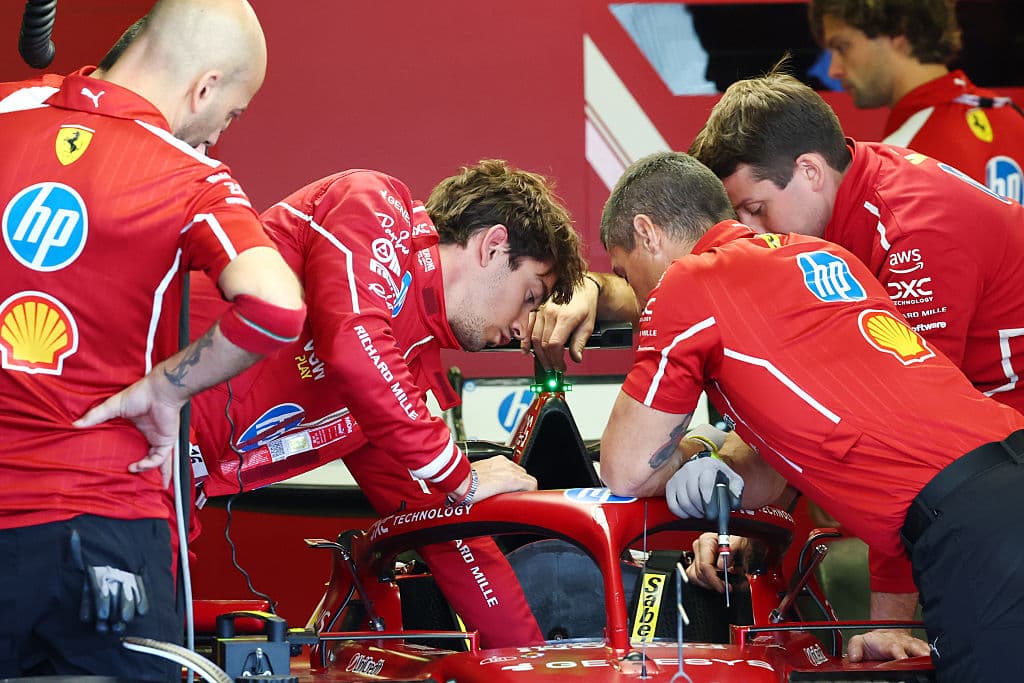The Autódromo Hermanos Rodríguez in Mexico City presents one of the unique and most demanding challenges on the Formula 1 calendar. Its extreme altitude, nearly 2,200 meters above sea level, dramatically impacts aerodynamic downforce and engine performance, often leading to unexpected shifts in the competitive order. This year's Free Practice sessions for the Mexican Grand Prix have once again spotlighted Scuderia Ferrari's efforts to balance raw single-lap pace with sustainable race performance, placing the team squarely in a demanding fight against key rivals Red Bull Racing and a resurgent McLaren. The immediate pre-race assessment from Ferrari's own camp suggests a challenging weekend awaits, characterized by a delicate trade-off between qualifying speed and long-run consistency.
The Narrative of Practice: Single Lap Brilliance Meets Race Pace Caution
Friday's practice sessions delivered a mixed, yet ultimately telling, picture for the Italian squad. Charles Leclerc, who claimed the top spot in the rookie-heavy Free Practice 1 and finished a competitive second in Free Practice 2, demonstrated that Ferrari’s machine retains its inherent speed over a single lap, particularly in the critical cool conditions of the afternoon session. However, the optimism derived from these times was immediately tempered by the drivers' own analysis of the car’s high-fuel performance.
Leclerc’s post-session remarks were notably candid and became the central talking point of the paddock. While acknowledging a "positive Friday" overall, the Monegasque driver stated: “We are still on the back foot compared to Red Bull, especially on low fuel, and McLaren, especially on high fuel. No surprises there, we expected them to be the strongest teams coming here.” This assessment encapsulates Ferrari’s traditional challenge: often excellent in qualifying trim, but sometimes struggling to maintain tyre life and optimal car balance over a full race distance, a vulnerability that the high altitude and specific circuit layout of Mexico City tend to amplify.
The comparison with their competitors is particularly salient. Max Verstappen and Red Bull Racing appeared to secure the definitive edge on low-fuel running, finishing fastest in FP2. More concerning for Ferrari, however, was Leclerc's observation regarding the Woking-based McLaren team. He noted that in the high-fuel runs, McLaren appeared to be "in a league of their own, by a lot," a gap he admitted made fighting with them in the race look "not realistic" initially. This highlights the possibility of a strategic dilemma for Ferrari: secure a front-row start to potentially jump Verstappen, or risk falling into a tyre management battle with a seemingly superior McLaren race package.
Historical Context and the Altitude Effect
The challenges Ferrari faces are not unprecedented at this venue. The high-altitude environment is a historical crucible for Formula 1 car design. The thin air means teams run maximum downforce wings, yet the cars generate minimal actual downforce. This necessitates precise mechanical setup for grip, as well as exceptional brake and engine cooling management.
Historically, Ferrari has had moments of brilliance here, including their most recent Grand Prix victory a season prior, which came amidst a chaotic race scenario. However, the track's blend of long straights and tricky, low-speed stadium sections demands a high-efficiency power unit and a mechanically stable car, areas where rivals have sometimes proven stronger. The current generation of cars further complicates the setup, as the high-rake philosophy often employed by Red Bull traditionally copes well with the altitude's downforce reduction, a characteristic that McLaren appears to have successfully replicated and perhaps even surpassed in recent developments. Ferrari, with its own specific aerodynamic philosophy, must fine-tune its ride height and suspension to extract peak performance without compromising reliability or tyre health.
The View from the Other Side of the Garage: Lewis Hamilton’s Assessment
Lewis Hamilton, in his first season with Ferrari, added an intriguing layer to the team’s internal assessment. Having missed the first session to fulfil the mandatory rookie driver practice quota, the seven-time World Champion was fifth quickest in FP2. Despite a respectable time, his post-practice comments betrayed a similar struggle with the car’s handling. Hamilton expressed "surprise how relatively close we are, given how not great it felt," suggesting that the car’s true potential was perhaps masked by suboptimal balance and driver confidence issues.
Crucially, Hamilton also stressed the importance of strategic discipline, urging the team to avoid "silly decisions" that have occasionally hampered the Scuderia's race efforts in the past. This subtle commentary, particularly coming from a driver renowned for his strategic acumen and race management, underscores the critical role that trackside decision-making will play in converting their qualifying potential into a strong Sunday result. His focus is clearly on tyre conservation and the execution of a clean, error-free Grand Prix.

Expert Perspectives and The Race Day Forecast
Paddock analysts largely concur with the drivers' findings. The consensus is that over one lap, Max Verstappen and Red Bull remain the benchmark, but their long-run pace in Mexico appears less dominant than previously witnessed this season. The key differential lies with McLaren, whose long-run simulations, possibly utilizing different tyre compounds than their rivals, hint at an exceptional setup that manages to counteract the typical high-altitude tyre degradation.
Ferrari's target, therefore, seems clear: secure a front-row start to neutralize Verstappen's clean-air advantage and, crucially, find a way to manage the initial stints of the race to stay within striking distance of the McLarens. The tight margins in the midfield suggest that minor setup tweaks could yield significant performance, particularly in the complex braking zones and through the stadium section where precise car placement is paramount. Tire strategy will be central, as the hard and medium compounds will be tested severely by the circuit's abrasive surface and the need for maximum mechanical grip.
Conclusion: A Weekend of Opportunity and Precarity
The Mexican Grand Prix weekend is shaping up to be a fascinating battle of disciplines. Ferrari enters the decisive phase of the event with clear single-lap speed, placing Charles Leclerc and Lewis Hamilton in a position to challenge for pole position. This is a critical asset in a race where track position is highly valued. However, the candid admissions from Leclerc about the gap to McLaren’s high-fuel performance, coupled with Hamilton's call for strategic focus, highlight the precarity of their situation. The team's final setup decisions for qualifying and the race will determine whether they can successfully translate their Friday pace into a coveted podium finish, or whether they will be relegated to a fierce midfield battle for minor points. The Scuderia's performance on Sunday will not only impact the Constructors' Championship fight but also serve as a crucial barometer of their ability to execute a full, high-pressure race weekend.
